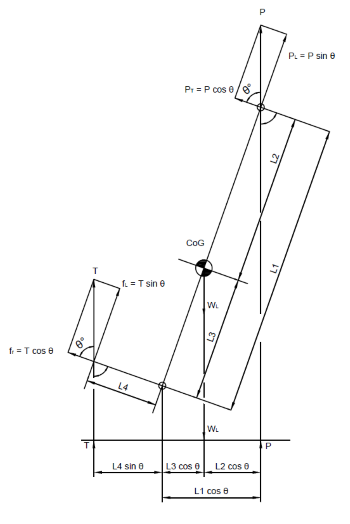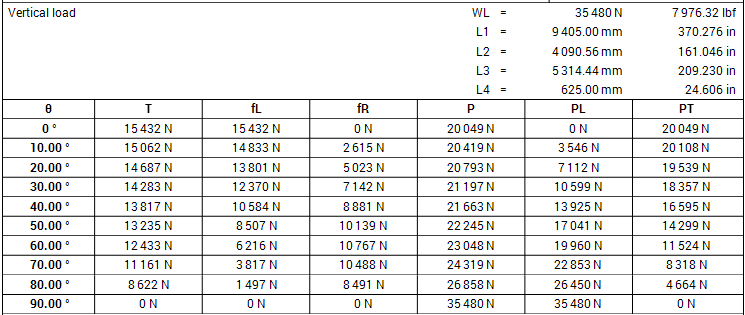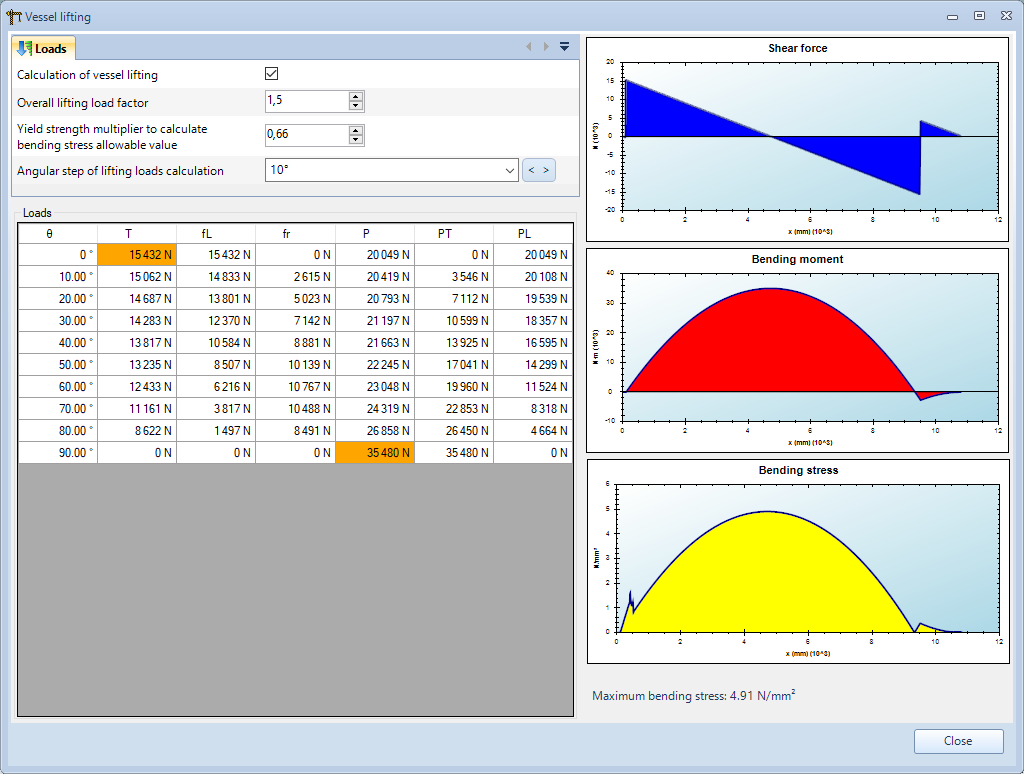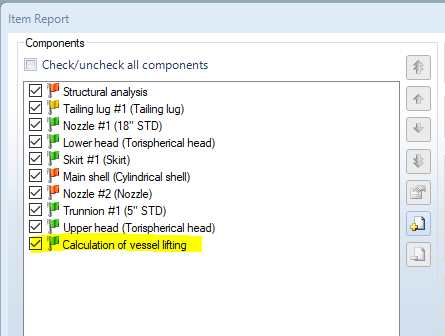Erection of vertical vessels
The verification of the lifting process consists first of all in checking the stress on the components welded to the vessel, that is:
Trunnion
Tailing lug
Top head/cone lug
Flange lug
Lifting lug (only for vertical vessels)
Therefore the first operation to be performed consists in adding to the item the components that will be used during the erection. Note that for the automatic calculation of the forces indicated below the presence of a skirt and/or a tailing lug at the base of the vessel (T - TAIL) and at least one trunnion or a lug in the upper part (P - PICK) is necessary.
The force acting on the components varies according to the angle of inclination θ, as shown in the figure:

The erection calculation module automatically calculates the forces when the angle changes and determines the conditions where the loads are greater. The result is presented in tabular form in the calculation report.

In the absence of this optional calculation module it is however possible to insert and verify the support components, but the P and T forces must be specified manually. It should be noted that the verification of these components does not normally include the stresses that they impose on the shell, for this calculation we recommend enabling the verification according to WRC.
The second check carried out by the lifting calculation module is the calculation of the bending moment and the consequent bending stress which acts on the sections of the column in the initial lifting phase, where the shear force is maximum. This stress is compared with a percentage of the yield strenght of the section material, normally equal to 2/3.
 \
\
All the options related to the calculation module can be customized by clicking on the crane icon at the top right.


The section of lifting calculations can be repositioned or disabled in the global report in the same way that you operate on the individual component sections.

Note that most of the calculations and the terminology used are based on chapter 10 of the "Pressure Vessel Design Manual" by D.Moss and M.Basic, fourth edition.
Search the documentation
Customer area
Categories
Articles in this category
- Weight management
- Wind load definition
- External actions for the vessel support calculation
- Period of vibration of items supported by brackets or rings
- Run a FEM analysis of a nozzle with NozzlePRO from NextGen
- How to validate an attachment (nozzle or support) according to WRC 107, WRC 537 o WRC 297
- Version 2019.3, WRC module updates
- Use of customized Excel files to define the WRC loads on nozzles
- Local loads transformation
- Simplified fatigue assessment according to EN13445-3 Clause 17 and AD 2000 S 1
- Detailed fatigue assessment according to EN 13445-3 Clause 18 and AD 2000 S 2
- Erection of vertical vessels
- Updates to simplified fatigue assessment in Clause 17 according to EN 13445-3 2014, Amendment 5
- Considerations on the verification of saddles according to the Zick method
- ASME Code Case 2901, Division 1 UG-44(b) and Division 2 4.16.12
- Bolt torque calculation for flanges
- Structural calculation of supports using load combinations
- Calculation of foundation loads for saddle-supported vessels using simplified finite element analysis